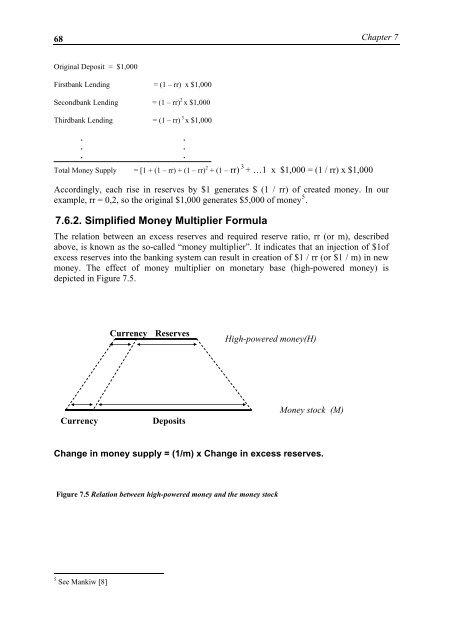MacroeconomicsI_working_version (1)
Create successful ePaper yourself
Turn your PDF publications into a flip-book with our unique Google optimized e-Paper software.
68<br />
Chapter 7<br />
Original Deposit = $1,000<br />
Firstbank Lending = (1 – rr) x $1,000<br />
Secondbank Lending = (1 – rr) 2 x $1,000<br />
Thirdbank Lending = (1 – rr) 3 x $1,000<br />
. .<br />
. .<br />
. .<br />
Total Money Supply = [1 + (1 – rr) + (1 – rr) 2 + (1 – rr) 3 + …1 x $1,000 = (1 / rr) x $1,000<br />
Accordingly, each rise in reserves by $1 generates $ (1 / rr) of created money. In our<br />
example, rr = 0,2, so the original $1,000 generates $5,000 of money 5 .<br />
7.6.2. Simplified Money Multiplier Formula<br />
The relation between an excess reserves and required reserve ratio, rr (or m), described<br />
above, is known as the so-called “money multiplier”. It indicates that an injection of $1of<br />
excess reserves into the banking system can result in creation of $1 / rr (or $1 / m) in new<br />
money. The effect of money multiplier on monetary base (high-powered money) is<br />
depicted in Figure 7.5.<br />
Currency Reserves<br />
High-powered money(H)<br />
Currency<br />
Deposits<br />
Money stock (M)<br />
Change in money supply = (1/m) x Change in excess reserves.<br />
Figure 7.5 Relation between high-powered money and the money stock<br />
5 See Mankiw [8]




